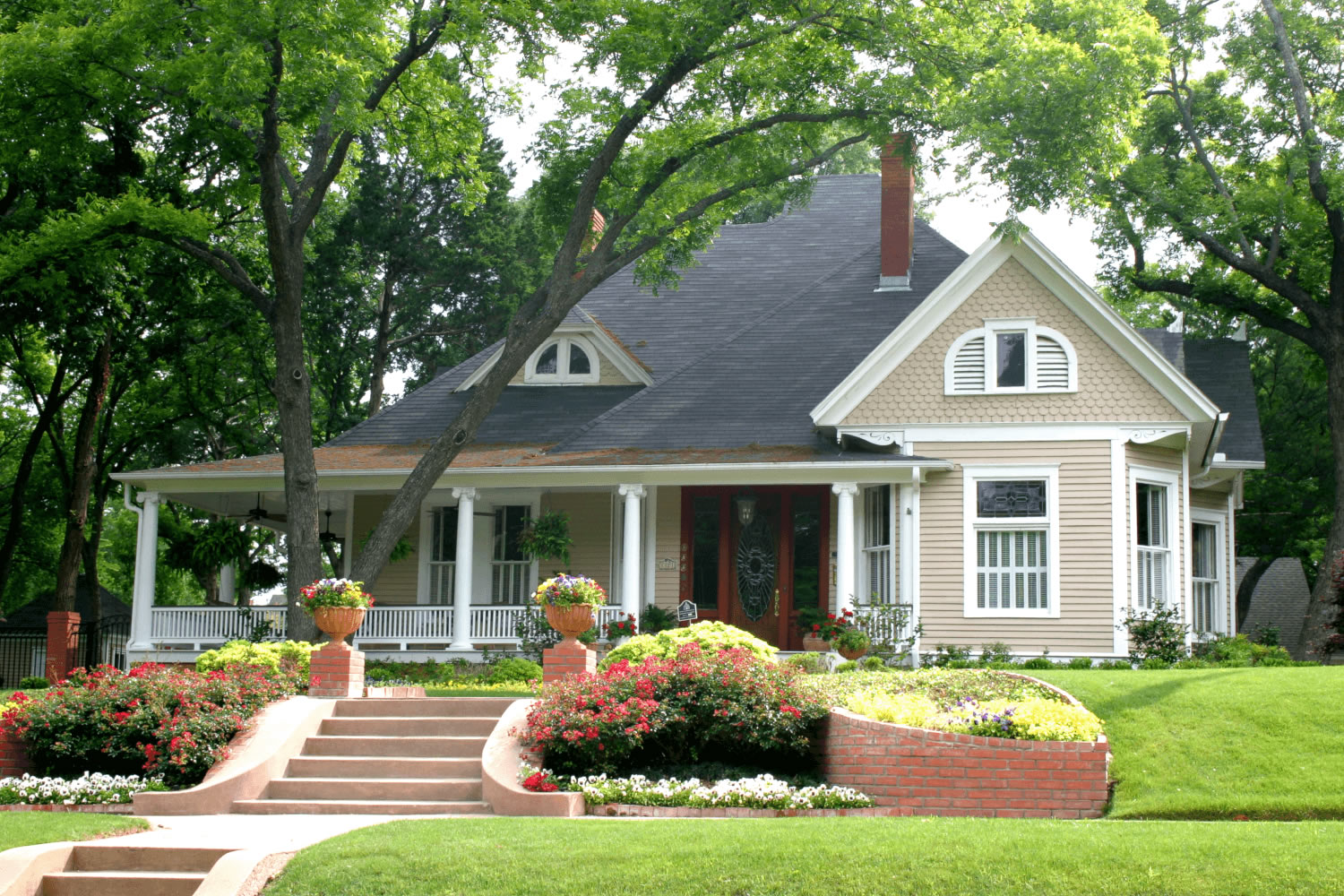Thankfully, proper tree management is simple and cheap, and can prevent almost all roof damage from trees. In this article, we’ll discuss the ways that trees can damage shingles and how you can prevent each type of damage.
The Ways Trees Benefit Roofs
Trees offer your home shade and enhance its beauty. They can even offer shingles protection, under the right circumstances. Trees benefit roofs by:
Blocking the wind: Mature trees that are upwind of the roof can block a great deal of wind, reducing its effect on your shingles, especially during severe windstorms.
Providing ultraviolet (UV) ray protection: Mature trees may also shade your roof. Shorter trees may only shade your roof in the early hours of the morning or late in the evening. Still, any shade can help reduce the effect of UV light on your asphalt shingles. Over time, UV light shortens the life span of most roofing materials.
Moderating summer temperature: In summer, the shade the tree provides will also help reduce the temperature in your home. Roofing shingles absorb heat from the sun and can radiate that heat back into your home at night.
How Trees Can Damage Roofs
Falling on roofs: There’s always the possibility that your tree could fall on your roof if it is damaged, ill or too weak to withstand a windstorm. We’ll discuss the signs a tree is unstable below.
Dropping branches: Can tree branches damage a roof? Yes, even small branches can scratch roofs just as they would scratch a window. If they are blown off the tree by a storm, they may find their way to damage your shingles. Several large branches may add too much weight to your roof or even cause dents on impact just as a fallen tree could. This damage is more likely in the winter when the tree branches are heavy with snow and ice.
Low-hanging branches: If not pruned, tree branches may hang over your roof. If these branches touch the roof or rub up against the roof during a windstorm, they can scratch away at the shingle’s outer protective layer. Tree branches that overhang a roof such that they can touch or abrade the shingles when the wind blows should be properly trimmed.
Dropping leaves and needles: Deciduous trees drop their leaves every fall and make a big mess on your rooftop. Plus, evergreen trees may drop their needles all year round.
Excessive shade: A little shade is a benefit in the summer to help keep your home cool. On the other hand, too much shade can make it difficult for your roof to dry off. If it stays wet for too long, your roof may develop mold and algae growth.
Animal access: Mature trees can allow animals, especially squirrels, to venture onto your roof. They may simply sit on your roof for a while, or they may choose to nest on your roof if they see the opportunity. It’s wise to cut back tree branches so that animals won’t try to jump onto your roof.
What You Can Do to Prevent Roof Damage From Trees
Trim the tree: Trim all tree branches that are too close to the roof. It is best to ask an arborist to remove overhanging branches, as they will be able to protect your roof as they work. Or you can use the same strategies you’d use to protect your home and garden during a roof installation. Also, if you find that you need to prune more than 25 percent of the tree, it may be better to remove the tree entirely. A tree that has experienced such an extreme pruning is likely to die and fall over.
Prune young trees: You can use pruning to control tree growth. You may prune young trees so that they only develop strong crotches (the junction between the branch and trunk), which are less likely to break off in storms.
Clean up debris: Remove tree debris from the roof and the gutters as soon after it has fallen as you can. If you have a tree that drops debris all year, such as a pine tree, you will need to clean the gutters and roof every few months.
Cut down unstable trees: Trees that are unstable or seriously ill should be cut down quickly before they have the chance to fall onto your roof. However, first check with your local city bylaws and your arborist. Some tree species are protected and cannot be cut down. Other areas prohibit removing trees with a certain trunk diameter.
What to Do if a Tree has Fallen on Your Home
Evacuate: If a tree has fallen on your home and has pierced through the siding or the roof, or if it has put tremendous weight on the roof, it is best to evacuate your family from the home. Few trees are capable of collapsing a well-maintained home, but falling debris can be a safety hazard.
Assess damage: While you wait for the professionals to arrive, survey the damage. Take pictures of anything that has been damaged. The tree may have pulled down an electric line or caused damage to the plumbing or gas lines in the home. So, if you see water leaks or sparks, or if you smell a gas leak, do not investigate further.















